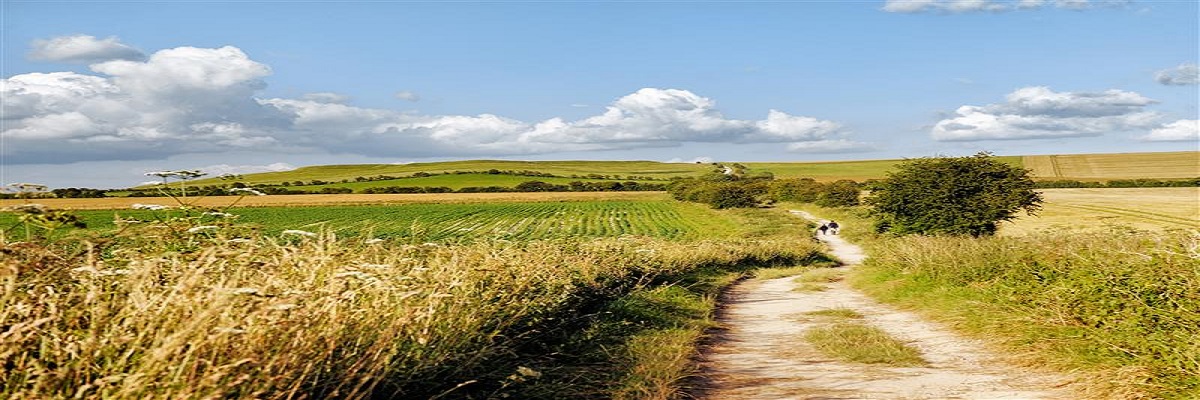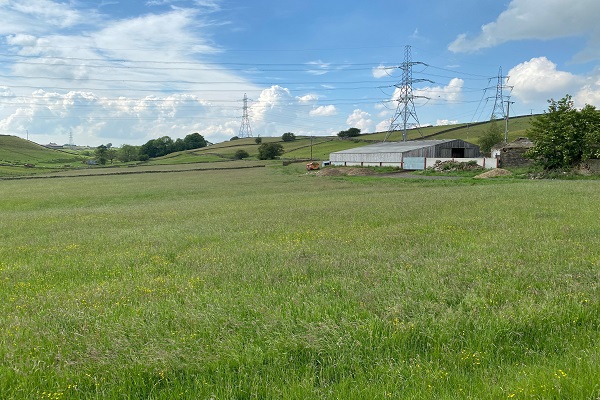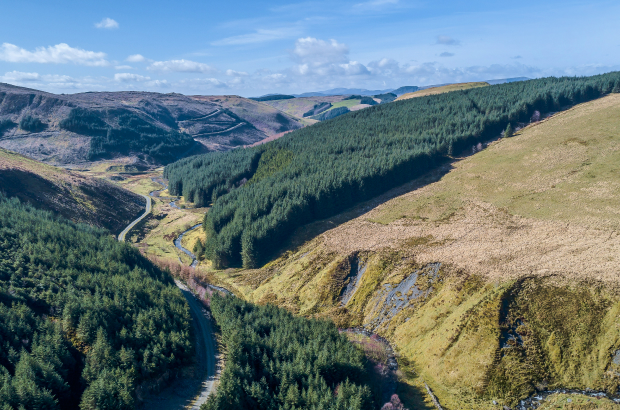In the Know: Managing rights of way and permissive paths
Managing public access can present serious challenges for land managers – from livestock worrying and gates left open, to crops damaged by people straying from footpaths. For some, it also means fly-tipping, motorbike damage or general tension with members of the public who may not understand or respect the working nature of the land.
The Government’s decision in late December 2024 to remove the 2031 cut-off date for registering historic rights of way adds a further layer of uncertainty around future claims for public access.
Yet while access can bring complications, it can also offer opportunities – drawing more people into the countryside, and with them, potential customers for farm shops, leisure ventures, and rural tourism businesses. But this depends heavily on the public behaving responsibly – and farmers and landowners having the right tools and support to manage access on terms that are workable for them.
In our experience, successfully managing public access requires a two-pronged approach.
First, land managers need to understand their legal rights, including how to prevent new rights of way being created, and their legal responsibilities, such as ensuring paths are unobstructed and safe.
But that’s only half the picture.
The rest involves proactive public engagement – helping walkers, cyclists and riders understand how to act responsibly in the countryside. That’s not always easy, especially in areas where poor behaviour is entrenched. But where it works, the best outcomes tend to come when legal safeguards and good communication go hand in hand.
By setting expectations early and demonstrating they are meeting their responsibilities, landowners are better placed to encourage the kind of behaviour that makes access work for everyone – people staying on footpaths, picking up after their dogs, and treating the land with care.
What are the basic legal requirements for landowners in relation to rights of way?
Landowners must keep public rights of way on their land accessible and obstruction-free. Permanent or temporary blockages – like locked gates, fences, or overgrown hedges – are illegal and if the highway authority is forced to clear them, it can bill the landowner.
Footpaths and bridleways along field edges must remain uncultivated, with specific widths kept clear – 1.5m for footpaths and 3m for bridleways. The minimum width of cross-field routes is 1 metre for a footpath and 2m for a bridlepath, and paths must be reinstated after cultivations.
Gates or stiles are usually the landowner’s responsibility and must be maintained so they are safe to use.
How best to guard against the creation of new rights of way?
Landowners can safeguard against the creation of new public rights of way by submitting a formal statement and declaration to the local authority under Section 31(6) of the Highways Act 1980.
This declaration contains a map of their property showing any rights of way crossing it and a statement to the effect that the owner does not intend to allow any more. This means any new routes created after the lodging of the statement will not gain right-of-way status.
Section 31(6) deposits can be very useful, but they do require care. It’s important to check the definitive map held by the local authority – not just rely on OS maps – and to walk every route on the ground. If the reality is that people are cutting a corner or straying from a right of way, there is potential for that to lead to a claim in future. There is also a cost associated with making a deposit, which varies according to local authority
How easy is it to divert or close footpaths?
Diverting a footpath can be a long and complex process and will usually require legal advice. Defra guidance introduced in August 2023 sets out how local authorities should give weight to the adverse impact of a right of way on landowners where paths go through gardens, farmyards or commercial premises.
These rules won’t help in every case, but they do offer hope where intrusive paths seriously affect privacy, safety or security.
The key questions authorities will ask are: is there a good reason for the change, and will the proposed route offer a better experience for users? Clear communication, offering a workable alternative, and addressing concerns early can help avoid objections – but it’s not a fast or guaranteed process.
Are permissive paths a good option for landowners?
If the public are already using land that isn’t a designated right of way, taking steps to block access can lead to friction. In some cases, it can also backfire – pushing people into more sensitive areas or escalating tensions.
Some landowners have found that creating a permissive path – allowing walkers access on defined terms – is a more effective strategy. This can also help guide people onto a safer or more manageable route than an existing right of way.
A good way to create a permissive path is to first engage with the parish council or local authority to see if a formal agreement can be put in place which sets out who is responsible for what.
It may be that the parish council or local council will agree to install stiles or dog waste bins.
That said, permissive access is not for everyone. It takes ongoing management and comes with liability considerations, such as ensuring the path is safe and that appropriate public liability insurance is in place. There’s also a risk that once access is granted, the public may treat it as a permanent right, regardless of what the signage says.
Closing a permissive path, even where legally justified, can draw complaints, social media criticism, or even press attention. This doesn’t mean permissive access isn’t worth considering – but it should be planned carefully and with eyes open.
Historically, permissive access grants were available through some of the old-style stewardship schemes, but they were then phased out. A new option was re-introduced in the 2024 version of the Sustainable Farming Incentive (SFI), although that scheme is currently paused.
How to improve the behaviour of people taking advantage of public access?
There will always be people who will behave badly and do not care. However, most people do want to do the right thing and will respond to positive engagement.
If there’s a particularly sensitive area, consider offering an alternative where access can be better managed. People tend to follow visual clues so a mown path or marked trail can help to keep visitors away from areas you would prefer them to avoid.
Good signage can make a difference, particularly when it’s clear, calm, and explains why certain behaviours matter. For example:
- Signs that explain why dogs must be on leads because of the risk to wildlife or livestock
- Notices asking people to avoid walking on conservation margins, with a short explanation of what they are for
- QR codes linking to more information and guidance on your farm or estate website
Of course, education alone won’t deter deliberate bad behaviour like fly-tipping and hare coursing. These require stronger interventions:
- Physical deterrents (e.g. barriers or ditches to prevent vehicular access)
- Hidden cameras in fly-tipping hotspots
- Working with local police or rural crime teams
Public access is not always easy to manage and for some landowners, it brings real stress and cost. But by combining legal clarity with clear communication and practical design, the worst problems can often be reduced – if not eliminated. The key is to be realistic, stay informed, and get support when it’s needed.
The Countryside Code: Advice for land managers was updated by Natural England and Natural Resources Wales in 2022.
Key recommendations include:
- Make signs clear and easy to follow. Too much information can confuse visitors and cause them to do the wrong thing.
- Use friendly language if you need to use signs to tell visitors what they can or cannot do.
- Secure gates open if you want visitors to leave them that way. Consider self-closing gates if you want gates to remain closed, or use signs to tell visitors to close gates behind them.
- If visitors are trespassing, ask them if they are lost and help them get back to paths or areas they are allowed on. Visitors rarely mean to trespass.
- If you experience threatening behaviour, theft or damage report it to the police. Noise disturbances or fly-tipping should be reported to your local authority.
- If waymarking signs on public rights of way are in bad condition, report this to the Highway Authority.
- Warn visitors of unseen hazards on your land, but remove a sign if the hazard no longer exists. Do not use misleading signage, such as ‘bull in field’ if it is not true.
- Make sure trees and overhanging branches are stable and unlikely to fall on anyone.
- Do not keep animals you know are dangerous in places where there is public access. Consider that visitors might not know how animals behave, especially if they are protecting their young.
This article forms part of our ‘In the Know’ series which sees Strutt & Parker experts share insight and advice on how farms and estates can improve their business resilience.






